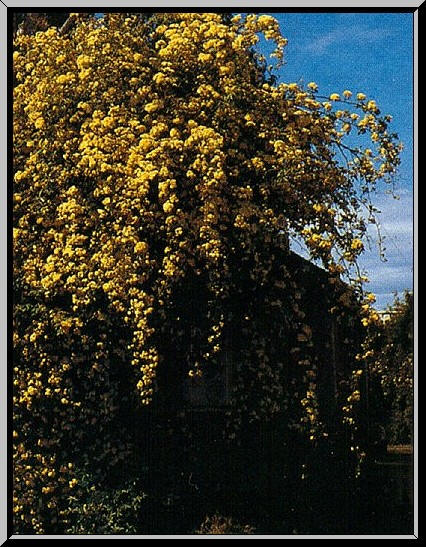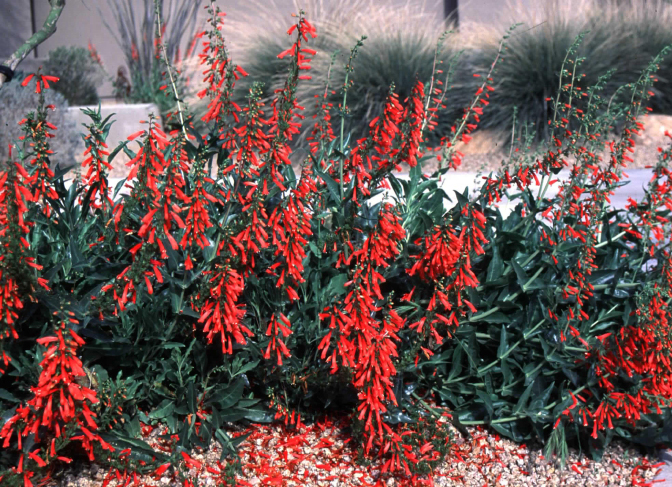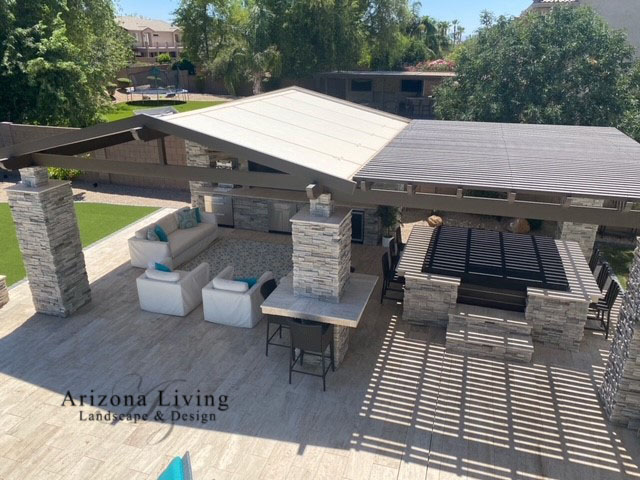Arizona Landscape Plant Guide (Low-Water Plants That Love the Desert)
Arizona’s low desert climate rewards plants that handle heat, sun, and lean soils. Below are our field-tested favorites we design with every week across Queen Creek, San Tan Valley, Gilbert, Mesa, Chandler, and Phoenix—organized so homeowners can choose fast.
How to use this guide: Look for Sun, Water, Size, Seasonal Interest, and Best Uses on each plant.
Flowering Shrubs & Color Workhorses
Texas Sage/Texas Ranger(Leucophyllum Frutescens)
- Sun: Full
- Water: Low
- Size: 4-8″ h/w (variety dependent)
- Seasonal Interest: Purple slushes after humidity/monsoon
- Best Uses: Hedges, privacy, color with minimal care
Yellow Bells (Tacoma Stans)
- Sun: Full
- Water: Low-moderate
- Size: 6-10″ h
- Seasonal Interest: Long-season yellow blooms
- Best Uses: Accent color near patios, backdrop for outdoor kitchens
Orange Jubilee ( Tecoma x ‘Orange Jubilee’)
- Sun: Full
- Water: Low-moderate
- Size: 8-12″ h
- Seasonal Interest: Orange flowers spring -gall
- Best Uses: Fast screens, vivid color, trellis/column softening
Bougainvillea (Bougainvillea spp.)
- Sun: Full
- Water: Low
- Size: varies (dwarf to vining)
- Seasonal Interest: Intense color most of the ware season – messy
- Best Uses: Walls, pergolas, high-impact color
Hopbush (Dodonaea viscosa / ‘Purpurea’)
- Sun: Full
- Water: Low
- Size: 8-12’h
- Seasonal Interest: Evergreen; purple form adds foliage color
- Best Uses: Clean, formal screens where flowers aren’t needed
Lantana (Lantana camara & L. montevidensis)
- Sun: Full
- Water: Low
- Size:1-3′ h/w (groundcover forms); 3–5’ h (bush forms)
- Seasonal Interest: Continuous color warm seasons
- Best Uses: Clean, formal screens where flowers aren’t needed
Succulents & Architectural Accents
Red Yucca (Hesperaloe parviflora)
- Sun: Full
- Water: Low
- Size: 2–3’ h clumps; 5’ flower spikes
- Seasonal Interest: Coral/pink spikes spring–fall; hummingbird magnet
- Best Uses: Median strips, along paver borders, pool-adjacent (low litter)
Golden Barrel Cactus (Echinocactus grusonii)
- Sun: Full
- Water: Very low
- Size: 1–3’ diameter (clumps with age)
- Seasonal Interest: Sculptural form, yellow spines
- Best Uses: Modern desert accents, rock outcroppings
Parry’s Agave (Agave parryi)
- Sun: Full
- Water: Very low
- Size: 2–3’ rosette
- Seasonal Interest: Blue-gray form, cold-hardy among agaves
- Best Uses: Entry groupings, contemporary beds
Desert Spoon (Dasylirion wheeleri)
- Sun: Full
- Water: Very low
- Size: 4–6’ h/w
- Seasonal Interest: Textured radial blades, tall bloom stalk
- Best Uses: Specimens, xeric focal points
Santa Rita Prickly Pear (Opuntia violacea var. santa-rita)
- Sun: Full
- Water: Very low
- Size: 3–6’ h/w
- Seasonal Interest: Purple pads in cool temps, spring blooms
- Best Uses: Color accent in rock/granite fields
Aloe ‘Blue Elf’ (Aloe × ‘Blue Elf’)
- Sun: Full to part sun
- Water: Low
- Size: 1–2’ h clumps
- Seasonal Interest: Winter–spring orange flowers, clean clumps
- Best Uses: Near entries, courtyard color in the cool season
Groundcovers & Edges
Damianita Daisy (Chrysactinia mexicana) – Sun: Full | Water: Low | Size: 1–2’ mounds | Interest: Yellow blooms spring–fall | Use: Curbside, hot reflected areas
Trailing Rosemary (Salvia rosmarinus ‘Prostratus’) – Full sun | Low | 1–2’ h, trails | Blue bloom | Walls, raised planter spill
Trailing Lantana (L. montevidensis) – Full sun | Low | 1–2’ h | Long bloom | Slopes, along paver edges
Deer Grass (Muhlenbergia rigens) – Full sun | Low-mod | 3–4’ clumps | Plumes fall | Naturalistic massing
Quick Picks by Need
- Fast privacy: Texas Sage, Orange Jubilee, Hopbush
- Pool-adjacent (lower litter): Red Yucca, Aloe ‘Blue Elf’, Desert Willow, Damianita
- Maximum bloom: Desert Willow, Yellow Bells, Bougainvillea, Lantana
- Ultra low-water / native look: Ironwood, Desert Spoon, Parry’s Agave, Golden Barrel
- Cold-hardy succulents: Parry’s Agave, Red Yucca, Desert Spoon
Pet/people caution: Oleander, Sago Palm, Lantana, and Texas Mountain Laurel seeds are toxic if ingested. Place thoughtfully.
Watering & Placement Cheat Sheet (Low Desert)
- Depth, not drips: Water to 1 ft (succulents/perennials), 2 ft (shrubs), 3 ft (trees).
- Feeder roots: Place emitters out near the canopy edge, not at the trunk.
- Seasonal frequency: Increase in summer; reduce in winter. Use a soil probe—moist soil lets the probe slide; dry soil stops it.
Need help? See our Irrigation & Maintenance FAQ (check valves monthly, replace clogged emitters, and adjust seasonally).
Design Ideas
Paver Patios – soften borders with Red Yucca & Damianita.
Outdoor Kitchens/BBQs – backdrop with Orange Jubilee or Hopbush.
Pergolas & Shade – seat under Desert Willow for dappled light.
Entertainment Walls – pop color with Bougainvillea (where frost allows).
Plant Guide FAQ
What are the best low-water plants for Arizona backyards?Red Yucca, Parry’s Agave, Desert Spoon, Texas Sage, and Desert Willow perform reliably with minimal water.
Which plants are good near pools?Choose low-litter options like Red Yucca, Agave’s, Aloe ‘Blue Elf,’ Damianita, and Desert Willow tree placed just outside the splash zone.
Do I need to amend soil for desert plants?Most desert plants prefer well-drained native soil; avoid over-amending with rich compost that holds water.
How often should I water new plantings?Water deeply and more frequently the first 6–8 weeks, then taper to a deep, less-frequent schedule as roots establish.
What’s a simple seasonal watering rule?Hotter weather = more frequent, same depth; cooler weather = less frequent, same depth. Always check with a soil probe.
Ready to pick, place, and plant?
Call 480-390-4477 or Request a Free Design Quote. We design & build complete desert-friendly landscapes in Queen Creek, San Tan Valley, Gilbert, Mesa, Chandler, Florence, and Coolidge.
Arizona Plant Index
Click on the images for larger pictures and details of the plants.
Some images and content courtesy of Mountain States Wholesale Nursery. Also check out their plant catalog.




























































